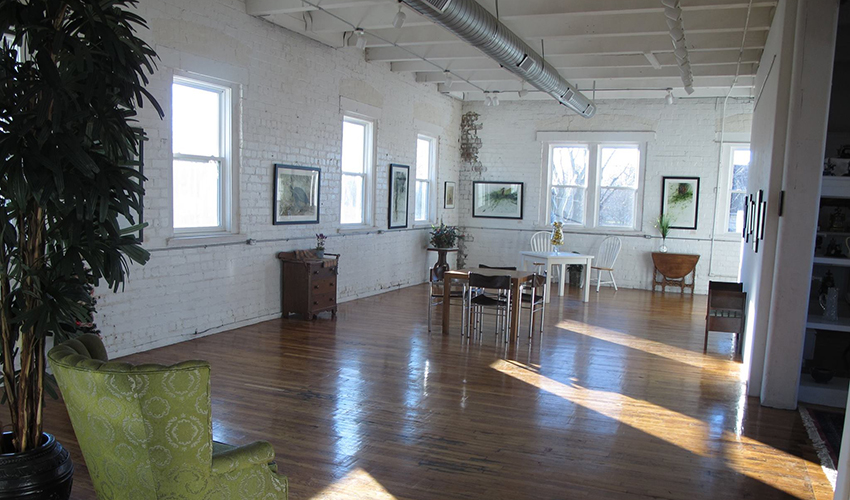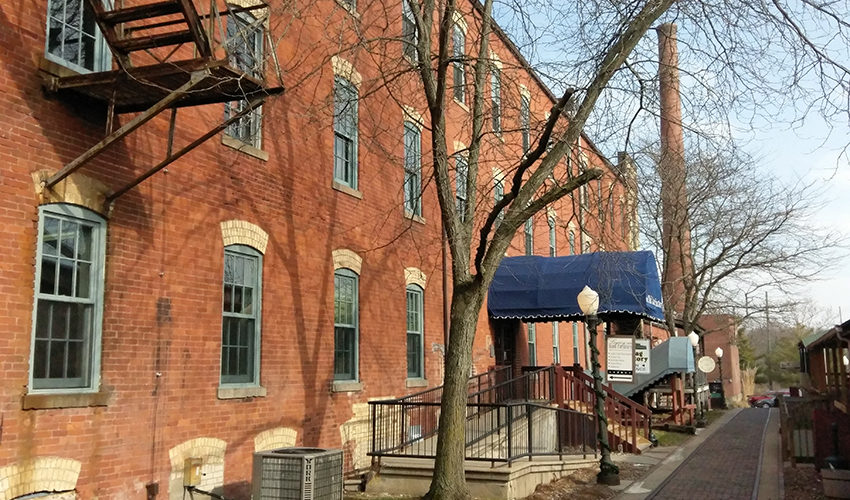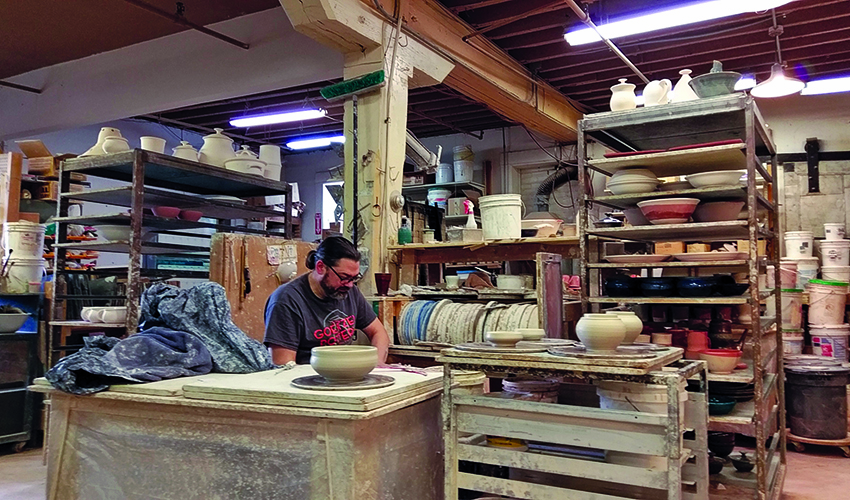NEWS
Made in Indiana
Historic factories embody the essential characteristics of places that tell a community’s story. They’re visually dominant behemoths, made of sturdy brick, metal, and concrete, with smokestacks, skywalks, sawtooth roofs, water towers. They employed dozens to hundreds of people at a time, often for generations, turning out products famous and obscure and dispensing paychecks that kept families afloat. When production shuts down, it doesn’t have to mean the end of the line for these landmarks.

Re-Tooled
Do you have the kind of vision and imagination that lets you squint at hulking nineteenth-century factory and see places to live, shop, eat, even have a wedding? Needless to say, we love such visionaries.
From her frame shop on Thorntown’s Main Street, Karen Wright used to look across the street and imagine possibilities for what locals called “the old garment factory” where workers sewed clothes for J.C. Penney, Sears, and Bobbie Brooks. In 2005, Wright and others proposed transforming the vacant turn-of-the-century Jacques Building into Sugar Creek Art Center.
A donor helped the all-volunteer group buy the site, which they rehabbed for artists’ studios. They installed a gallery in the former machine room on the open-plan second floor. With the recent installation of an elevator, the group made the site handicapped accessible and began renting the gallery for weddings and special events.
On the St. Joseph River in Mishawaka, the Kamm and Schellinger Brewery is an early example of industrial reuse of buildings that dated from the mid-1800s to early 1900s. The brewery closed in 1951. Redeveloped as the 100 Center in the late ’60s, the site included residences, a theater, restaurants, shops and businesses, with the old brewery equipment reused as public art.

Mishawaka’s massive Kamm & Schellinger Brewery incorporated a brewery, ice house, stables, garages, and boiler house – all repurposed in the late ’60s as the 100 Center. (Photo: Mishawaka Library Heritage Center)
The 100 Center lost tenants to newer shopping centers beginning in the late ’80s. In recent years, a second wave of revival brought Smokestack Brew, a sports bar-restaurant-live music venue to the former boiler room, and Morgans and the Little Black Dog Tavern, a restaurant and banquet hall specializing in European cuisine to the brewery’s 1930s garage and the stables that once sheltered draft horses and beer wagons. “Back in the ’70s and ’80s this was really a hot spot. A lot of people remember that, and we’re starting to regain that,” says owner MaryLou Stevens, who lives across the street in a historic home once owned by the Kamm family.
The Old Bag Factory in Goshen, another early example of industrial reuse, was built as a soap factory in 1896 and later produced containers, from burlap sacks to paper used in Hershey’s Kiss wrappers, until 1982. After it closed, a 1980s restoration turned it into a hub for artisans. The campus—the factory, boiler building and historic log cabin—includes antiques shops, cafes, and specialty stores. Walkers stroll past on a walkway made atop the railroad track that ran alongside the factory.
In South Bend, Kevin Smith rescued the six-story Studebaker Body Assembly Building, which he’s turning into an International Thought Center, which houses technology offices, data centers, advanced manufacturing, telecommunication interconnects, and a higher education portal. The project builds on Smith’s previous success in repurposing the nearby Art Deco-style Union Station as an event center and data hub for telecommunications providers. The immense factory—880,000 square feet—turned out automobile bodies, so its sturdy construction can support the considerable weight of the data center.
First to come online in Smith’s adaptation are two lower-rise additions to the Body Assembly Building on the south that housed receiving docks, assembly lines, the tool room, and paint lab. Slated to open this summer, the two-story buildings already house a biotech firm, F Cubed, and CupPrint US, a customizable paper cup company.
Smith recruited Gordon Gill of Adrian Smith + Gordon Gill Architecture to oversee the rehabilitation of the entire complex, appreciating the firm’s focus on sustainability and energy efficiency. The design features green elements, including a rooftop garden, collection of rainwater for reuse in the complex, and new plantings to create a park-like atmosphere along the still-functioning elevated train tracks next to the building. In one of the south buildings, Smith introduced an atrium by cutting through heavy concrete floors–and had the concrete reshaped into benches for the corporate campus.
This year, exterior rehab begins at the Body Assembly Building, the six-story factory designed by famed Detroit architect Albert Kahn. Continuing the focus on sustainability, Woodsmith, a wood manufacturing tenant, is using wood flooring salvaged from the building to create custom furniture, coffee and conference tables, cabinets, and other products.
Because the data hub in the building will produce heat, Smith intends to recapture it to help heat the site. “My goal is to make history in a way that builds on the shoulders of those that came before us,” says Smith, “and to prove that architecture should be understood, studied, saved, and reintegrated, so we have continuity.”
Stay up to date on the latest news, stories, and events from Indiana Landmarks, around the state or in your area.











